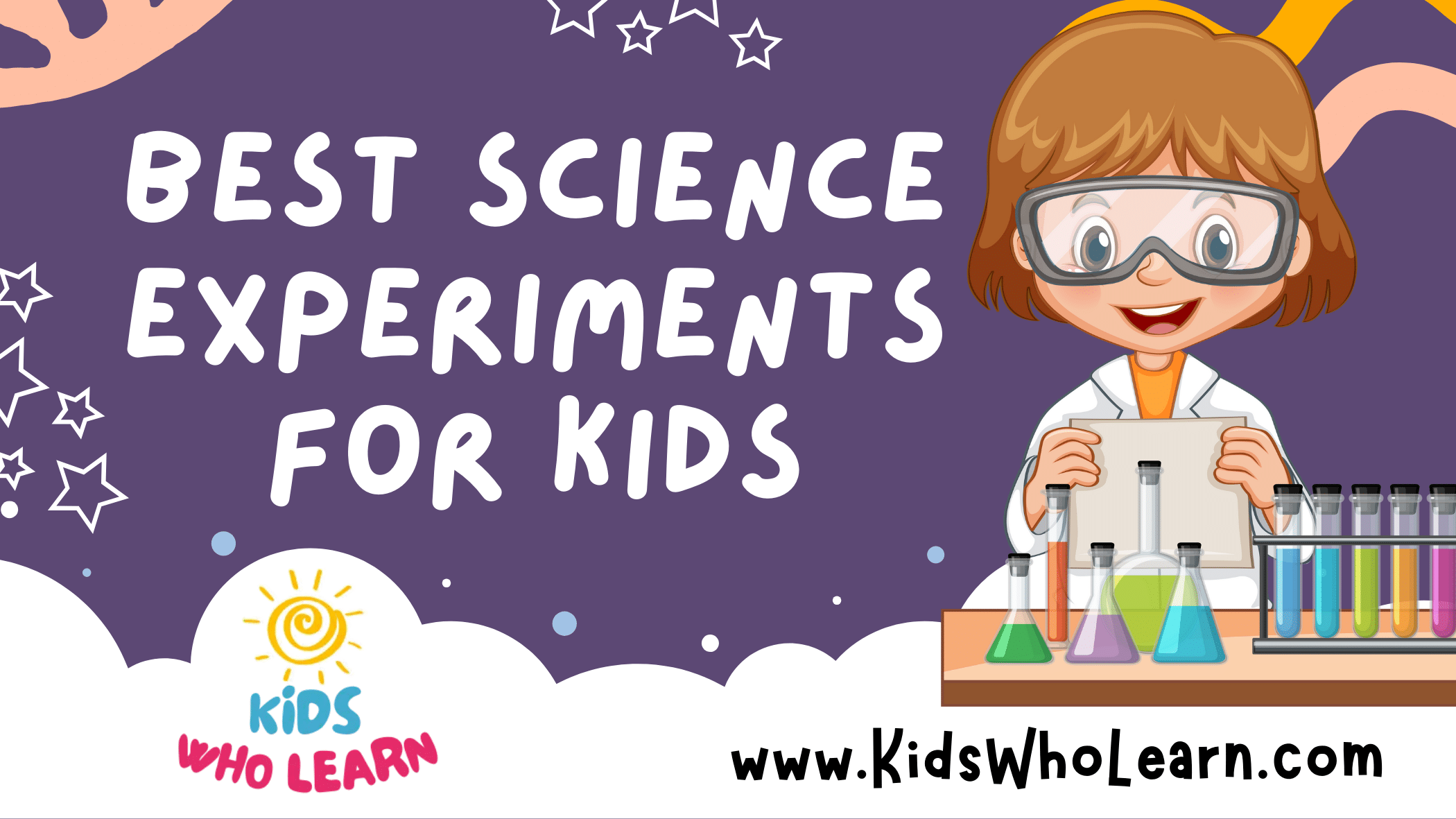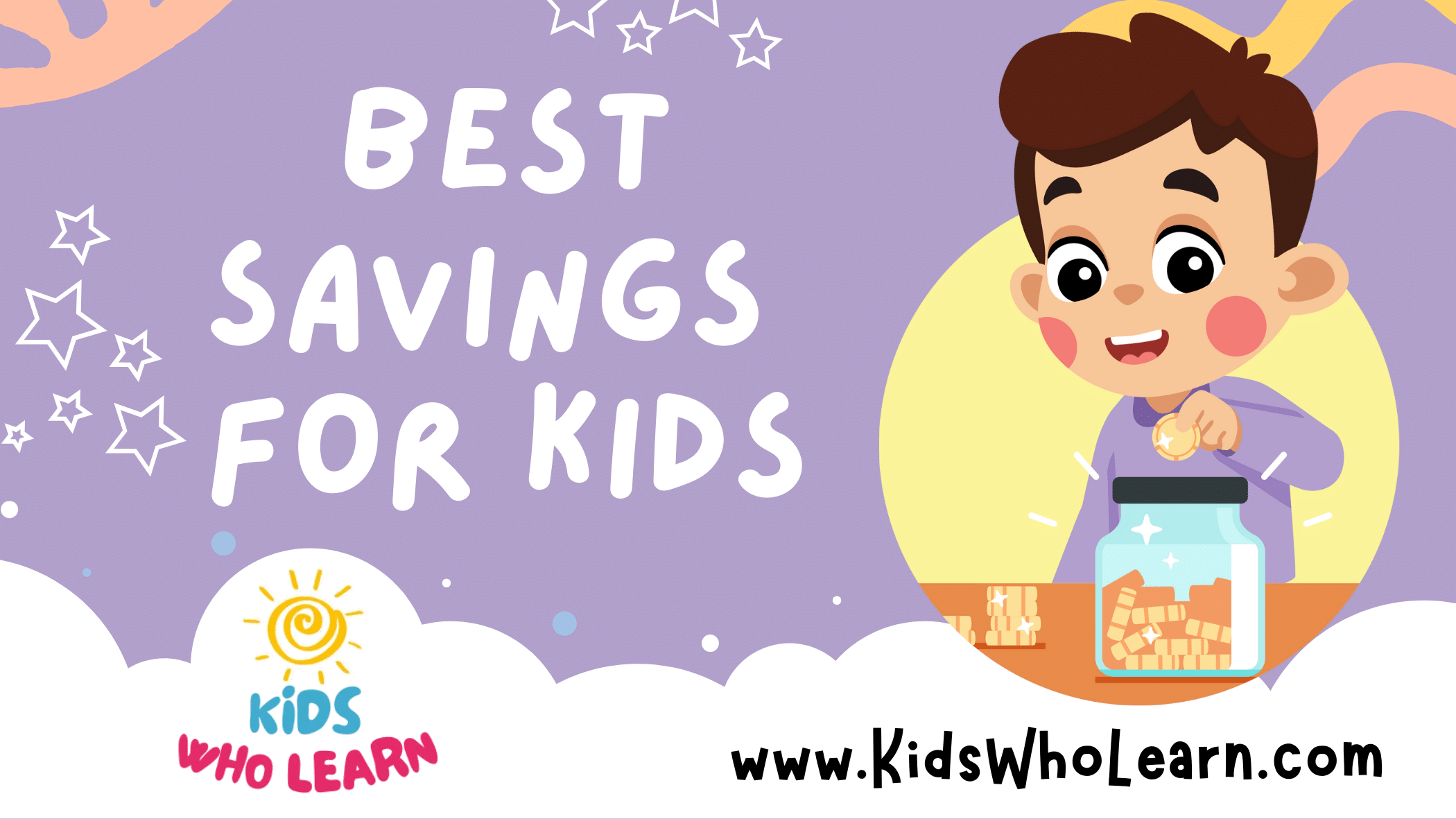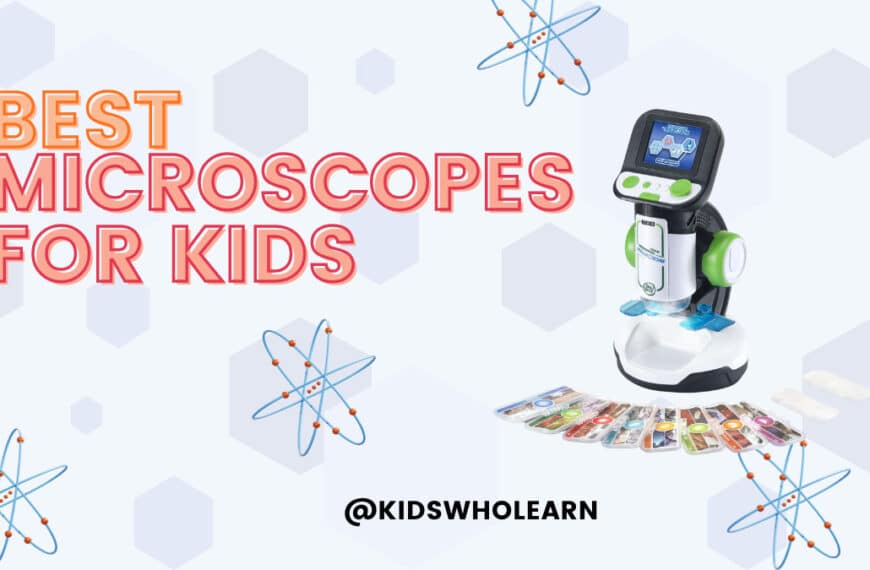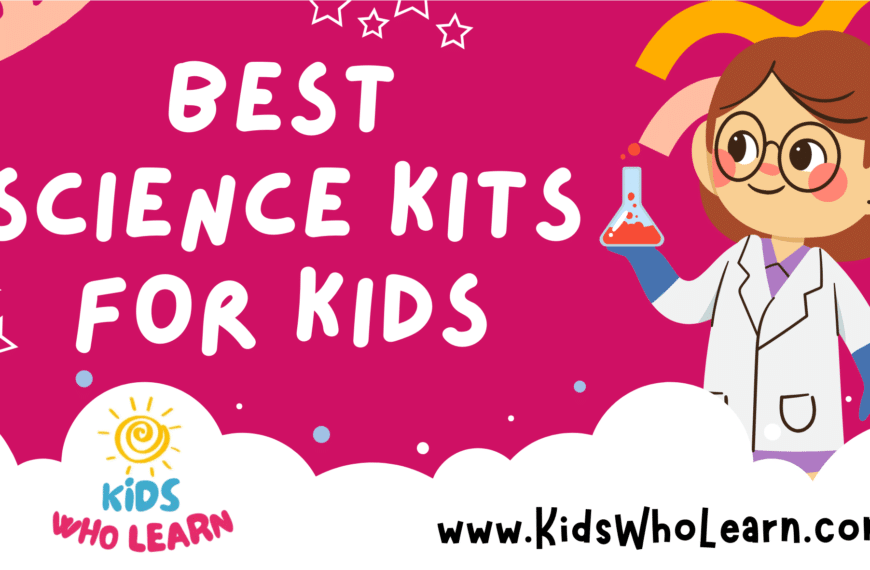Science experiments offer a unique window into the natural world, providing children with hands-on opportunities to explore and understand complex concepts in an engaging way. From mixing household chemicals to observing the growth of plants, these activities not only nurture curiosity but also lay the groundwork for a lifelong love of learning. The process of hypothesizing, experimenting, and observing is at the core of the scientific method and is a powerful tool for young minds to develop critical thinking and problem-solving skills.
Initiating your children into the world of science can be done easily with a variety of experiments tailored to different age groups and interests. Whether it’s creating a simple volcano with baking soda and vinegar or building a more complex circuit, the options are endless. Activities can range from exploring physical and chemical reactions to understanding the forces of physics. Children can even take science outside the classroom to discover the wonders of earth and space, or delve into life science through biology projects. These experiments are not just educational; they’re designed to be fun and captivating, often featuring an element of surprise that delights young scientists.
Key Takeaways
- Experiments are foundational for learning and applying the scientific method.
- A diverse array of topics keeps science exploration exciting and accessible for kids.
- Hands-on projects enhance critical thinking and can be enjoyable for the whole family.
Getting Started with Science Experiments
Before embarking on science experiments, familiarize yourself with the scientific method and gather essential materials. Prioritizing safety is crucial for a successful and enjoyable learning experience.
Understanding the Scientific Method
Engaging in science experiments begins with comprehending the scientific method, a systematic process of exploration. Here’s a step-by-step breakdown for you:
- Ask a Question: Identify something you want to know or a problem you want to solve.
- Do Background Research: Research what is already known about the topic.
- Construct a Hypothesis: Formulate an educated guess about the outcome.
- Test Your Hypothesis by Doing an Experiment: Conduct the experiment using a controlled and repeatable procedure.
- Analyze Your Data and Draw a Conclusion: Record your observations and see if they support your hypothesis.
- Communicate Your Results: Share your findings with others.
Remember, it’s okay if your hypothesis isn’t supported; that’s still a valuable result!
Essential Materials for Beginner Scientists
You’ll need basic supplies to get started with kid-friendly science experiments. Many can be found at home:
- Vinegar and baking soda for classic chemical reactions.
- Hydrogen peroxide and food coloring for experiments involving color changes.
- Ink for experiments on capillary action or chromatography.
A table of useful household items for science activities:
| Item | Use Case |
|---|---|
| Vinegar | Acid-Base Reactions |
| Baking Soda | Volcano Experiments |
| Hydrogen Peroxide | Catalytic Reactions |
| Food Coloring | Color Mixing and Diffusion |
| Ink | Chromatography and Dye Separation |
A few simple materials can support a variety of experiments, fostering an understanding of scientific concepts through practical application.
Safety Tips for Kids’ Experiments
When conducting science experiments, your safety is paramount. Here’s how to protect yourself:
- Always wear goggles or other protective eyewear to shield your eyes.
- Use gloves to protect your hands from substances that could irritate your skin.
- Conduct experiments in a well-ventilated area to avoid inhaling any vapors.
- Keep a clean workspace and never ingest any of the experimental materials.
Remember, adult supervision is essential, especially when you’re trying something new.
Physical Science Activities
Physical science provides a vast playground for young minds to engage with the fundamental principles of physics and chemistry. Through hands-on experiments, you can explore the wonders of different materials, reactions, and forces.
Exploring Density and Solubility
Understand density by comparing how various objects float or sink in water. Fill a clear container with water and gather items like salt, sugar cubes, and an egg. Observe how adding salt affects the water’s density and the buoyancy of objects like the egg. This will show you the concept of solubility as the salt dissolves.
- Materials: Salt, sugar cubes, egg, water
- Concepts: Density, solubility
Creating Chemical Reactions
Chemical reactions can be exciting and educational. Mix baking soda and vinegar to witness a release of gas and learn about the reaction between an acid and a base. Another fun experiment involves combining yeast, warm water, and sugar to see the effect of yeast acting as a catalyst in producing gas.
- Materials: Baking soda, vinegar, yeast, sugar, warm water
- Concept: Chemical reactions
Building Simple Machines
Explore physics by creating simple machines such as a lever, pulley, wheel and axle, or a small motor-powered device. Construct a mini bridge and learn about the distribution of force and the principles of engineering.
- Materials: Various household items to create levers, pulleys, and wheel and axle systems
- Concepts: Mechanical advantage, force distribution
Examining Forces and Motion
Delve into the properties of forces and motion with activities like creating an egg drop structure to absorb impact, or a soap-powered mini boat to understand surface tension. Experiment with rubbing a balloon on your hair to witness static electricity in action.
- Materials: Eggs, balloons, soap, makeshift boat
- Concepts: Forces, motion, surface tension, static electricity
Earth and Space Science Explorations
Earth and space science explorations offer you a tangible way to understand our planet and its place in the cosmos. Through hands-on experiments, you gain insight into the complex systems that dictate our weather, geology, and role within the solar system.
Weather and Atmospheric Science
Weather is a dynamic and interactive part of Earth science. You can simulate the water cycle and create precipitation with a simple Make It Rain experiment. For this, you need a clear plastic container, hot water, and ice to create condensation and observe rainfall. Tracking daily weather patterns becomes educational with a homemade rain gauge. Use a ruler to measure precipitation levels by placing the gauge outdoors. Ensure it’s in an open area to avoid inaccuracies from runoff or splashes.
Studying Rocks and Geology
Dive into geology by examining different rocks with the Rock On activity. With just a magnifying glass and a rock collection, you can observe mineral composition and rock textures. Classify them based on color, hardness, and layering. Building a solar oven can show how solar energy can change Earth materials. You can construct one with a pizza box, aluminum foil, and plastic wrap. Test how effectively your oven melts s’mores—demonstrating how sunlight causes changes in temperature and states of matter.
Understanding Our Solar System
Fostering an understanding of our solar system begins with studying the very planets that comprise it. Create scale models using different-sized fruits or craft materials to represent the planets. Place them at proportionate distances to comprehend the vastness of space. This exercise also helps visualize the relative sizes and positions of the celestial bodies that orbit the Sun.
By engaging in these activities, you’ll develop a deeper appreciation for the earth sciences and their significance in understanding the larger universe around us.
Life Science and Biology Projects
These projects allow young scientists to explore the intricacies of life science through interactive, hands-on activities. You will discover the wonders of the living world, from plant processes to animal adaptations.
Investigating Plant Life
Understanding plants is fundamental to life science.
- Germination Test: Place bean seeds in damp paper towels and monitor germination. Record your findings in a table showing days elapsed and signs of growth.
- Photosynthesis Exploration: Submerge a water plant in a clear container. Expose it to sunlight and observe the oxygen bubbles to visually grasp photosynthesis.
Human Body and Health
The human body holds numerous wonders, and practical experiments can reveal them.
- Muscle Fatigue: Engage in various exercises like push-ups or jumping jacks. Track repetitions and fatigue levels to learn about muscle endurance.
- Hand Washing Experiment: Apply glo-germ lotion on your hands, wash them with water, soap, or hand sanitizer, and compare the results under a UV light to illustrate the effectiveness of proper hygiene.
Learning About Animals and Ecosystems
Exploring animal physiology and habitats provides insights into biodiversity and ecosystem interdependence.
- Blubber Glove: Simulate blubber‘s insulating properties by filling two plastic bags—one with shortening and one without. Submerge both in ice water to feel the thermal insulation at work.
- Dinosaur Footprints: Create plaster casts of dinosaur footprints using molds or natural imprints in soil. Examine the casts to infer the size and behavior of these creatures.
Chemistry Experiments for Kids
Engaging with chemistry allows you to explore and understand the reactions between different substances. These experiments provide a hands-on approach to learning about chemical compounds and their properties.
Colorful Reactions and Indicators
With simple ingredients like red cabbage, you can create a natural pH indicator to test various household substances. The red cabbage contains anthocyanin, a compound that changes color when it interacts with acids or bases, allowing you to visually determine the pH of a solution.
Materials needed:
- Red cabbage
- Clear glasses
- White vinegar (acid)
- Baking soda (base)
- Water
Steps:
- Chop and boil the red cabbage in water to extract the pigment.
- Strain the solution into several clear glasses.
- Add a small amount of different household substances like lemon juice (acid) and soapy water (base) to separate glasses.
- Observe the color change to determine if the substance is an acid or a base.
Exciting Polymer Experiments
Polymers are large, chain-like molecules made up of repeating units. A familiar and fun polymer experiment involves making slime by combining glue, a common polymer, with a borate ion solution which acts as a cross-linker to form a squishy and stretchy substance.
Materials needed:
- White school glue
- Borax (sodium tetraborate)
- Water
- Food coloring (optional)
Steps:
- Dilute a teaspoon of Borax in one cup of water to create the cross-linking solution.
- In another container, mix half a cup of glue with half a cup of water, adding food coloring if desired.
- Slowly add the Borax solution to the glue mixture, stirring continuously.
- Knead the mixture until it reaches the desired consistency.
By conducting these experiments, you’ll gain a deeper understanding of how chemical reactions happen and what makes polymers unique.
Physics Experiments for Young Minds
Physics offers a playground for the curious mind, providing a foundation to understand the workings of the universe. Here, you’ll explore experiments that demonstrate fundamental principles through sound waves, light, and optics—perfect for engaging young scientists.
Sound Waves and Vibrations
You can delve into the fascinating world of sound waves by creating a simple experiment with a few household items. Grab a metal spoon, some string, and a partner to explore pitch and vibration.
- Tie a piece of string around the spoon and hold the loose ends to your ears.
- Have your partner tap the spoon, hanging freely, with a pencil.
By doing so, you’ll hear sound travel through the string directly to your ears, illustrating how sound waves move through different mediums.
Light and Optics Experiences
In this subsection, you’ll find out how light interacts with objects and can be broken into its constituent colors.
- Prism Experiment: Shine a beam of white light through a prism to see color dispersion. You will need a triangular prism and a flashlight for this.
Steps Expected Outcome 1. Darken the room. Helps to see the colors better. 2. Place the prism on a table. Positions it for light entry. 3. Shine the flashlight through one side of the prism. The beam of light will enter the prism. 4. Observe the other side. You’ll see the light split into a spectrum of colors. - Color Mixing Experiment: Use red, green, and blue transparent sheets to layer over a flashlight or screen to see color mixing in action.
Understanding these principles of physics anchors young minds in the reality of how sound waves and light interact with the environment around us.
Environmental Science and Ecology
Environmental science and ecology are crucial for understanding how your actions impact the planet. This section equips you with practical experiments for grasping water conservation and recycling principles essential for sustaining our environment.
Studying Water Conservation
To appreciate the critical role of the water cycle in nature, you can simulate it at home. Gather a clear plastic bag, water, a marker, and access to sunlight to create your mini water cycle model. Here’s a brief outline:
- Fill the bag: Pour a small amount of water into the bottom of the plastic bag.
- Seal and hang: Seal it tightly and hang it on a sunny window.
- Monitor for a few days: Watch how the water evaporates, condenses, and precipitates, demonstrating an essential conservation process.
This simple experiment helps you visualize the water cycle and understand the importance of conserving this vital resource.
Recycling and Sustainability Projects
Engage your creative side with recycling and sustainability projects. Start small by composting organic waste. Here’s what you’ll need:
- A container with a lid
- Soil
- Kitchen scraps (like fruit and vegetable peels)
- Dry leaves or shredded paper
Steps to create your compost:
- Layer the soil and kitchen scraps in the container.
- Add a layer of dry leaves or paper on top.
- Mix periodically and monitor the transformation into nutrient-rich compost.
Through this process, you learn how biodegradable materials break down and the way sustainability can be integrated into daily life. Remember, your efforts in recycling transform waste into resources, making a positive impact on the environment.
Engineering Challenges
Engineering challenges are an excellent way for kids to apply principles of STEM in a hands-on manner. By solving real-world problems, kids develop critical thinking and problem-solving skills.
Designing and Building Structures
Your ability to conceptualize, design, and construct is key in the Engineering Challenge: Designing and Building Structures. Start with a simple bridge made from cardboard and see if it can hold a specific weight. This exercise will teach you about the importance of structural integrity and the properties of materials like cardboard. Use the following list as a material and tool guide:
- Materials: Cardboard, scissors, tape, glue, weights (for testing)
- Tools: Ruler, pencil, construction paper (for sketches)
Electrical Circuits and Energy
Understanding electricity is fundamental in engineering. With the STEM Challenge: Electrical Circuits and Energy, you’ll create a basic circuit using a battery, wires, and light bulbs. This project illustrates the flow of electricity and the role each component plays in a circuit. Be mindful of safety and never use any power source beyond a simple battery.
Steps to Build a Circuit:
- Identify battery terminals (+ and -).
- Connect wires to the battery and a small bulb.
- Ensure the circuit is complete for the bulb to light up.
Key Components:
- Battery
- Wires
- Light bulb
- Switch (optional)
Aerospace and Rocketry Basics
Aerospace engineering gets you closer to the stars with the Aerospace and Rocketry Basics challenge. Create a simple rocket to understand the principles of flight and propulsion. This can be done through constructing a model rocket and studying how varying designs impact flight.
Experiment Objective:
- Comprehend basic aerospace principles.
- Observe how rocket design affects flight trajectory and stability.
Materials Needed:
- Paper or lightweight materials for the rocket body.
- Propulsion system (could be as simple as a balloon or water and air pressure).
Fun Demonstrations and Magical Experiments
Engaging your children in science can be both educational and entertaining. The experiments described here are simple, exciting, and reveal fascinating aspects of science right before your eyes.
Creating a Homemade Lava Lamp
To create your homemade lava lamp, you’ll need the following materials:
- A clean, clear plastic bottle
- Vegetable oil
- Water
- Food coloring
- Alka-Seltzer tablets
Instructions:
- Fill the bottle three-quarters with vegetable oil.
- Add water to the remaining space, leaving about an inch at the top, and observe the density difference as the water sinks.
- Add a few drops of food coloring; they will pass through the oil and mix with the water.
- Break an Alka-Seltzer tablet into pieces, drop one in, and watch your lava lamp come to life as the colored blobs start to move around.
This experiment not only creates a mesmerizing effect but also teaches the concept of density and the reaction between acid and base.
Performing Skittles Experiments
The Skittles experiment is a fun way to explore color diffusion. You need:
- Skittles candy
- A plate
- Warm water
Instructions:
- Create a circle with the Skittles on the plate, alternating the colors.
- Pour warm water in the center of the plate until it reaches the candies.
- Observe as the colors begin to diffuse into the water, creating a rainbow of color movement.
Through this simple yet visually appealing demonstration, children learn about color mixing and diffusion processes.
Applying the Knowledge
After conducting science experiments, it’s crucial to know how and where you can present your findings and further your understanding of scientific principles.
Science Fairs and Exhibitions
You’ll find science fairs to be excellent venues for presenting your experimental results. They allow for the practical application of your newly acquired knowledge in a public forum. Prepare a clear and concise presentation to explain your experiment and results. Here’s how to make the most of it:
- Prepare Your Materials: Gather all your visuals, such as charts or models.
- Practice Your Speech: Rehearse explanations of your methods and findings.
- Engage the Audience: Answer questions and demonstrate your scientific curiosity.
Further Learning and Scientific Curiosity
Your adventure into science doesn’t stop with one experiment. Use your initial findings as a springboard for extended learning. Here’s what you can do to keep the flame of curiosity alive:
- Ask More Questions: Each answer leads to new queries. Note these down for future exploration.
- Read and Research: Find books and reputable online sources to expand your understanding.
- Join a Science Club: Connect with peers who share your passion for discovery.
By participating in fairs and persistently seeking new knowledge, you lay down a strong foundation for a future in science.
Unique Science Projects
Science projects don’t have to follow the usual patterns. By using commonplace materials creatively, you can discover fascinating phenomena right at your fingertips. This section will guide you through crafting unique projects that combine the wonder of science with the creativity of art.
Unusual Science Experiments with Everyday Items
Dry Erase Marker Magic:
You can perform an impressive trick using a dry erase marker and a glossy surface. Draw simple figures on a whiteboard or enamel plate. Pour water over the surface, and watch your drawings lift off and float. This happens because the ink in dry erase markers is insoluble in water and has a lower density, allowing it to ride the surface tension.
Polishing Pennies:
Turn tarnished coppers into gleaming treasures. All you need is a solution of vinegar and salt to clean your pennies. This experiment teaches you about reactions between acids and metals, resulting in clean shiny coins.
Integrating Art into Science
Magic Milk Color Symphony:
Discover the beauty of color theory by adding drops of food coloring to a dish of milk. Then, dip a cotton swab in dish soap and touch it to the milk’s surface. You’ll witness a burst of color as the soap reduces the milk’s surface tension, pushing the colors around and creating a dazzling effect akin to an abstract painting.
Egg Drop Artistry:
Challenge your understanding of physics and art with the classic egg drop. Construct a contraption using household items to protect a raw egg from a fall. Wrap your project in bright colors and patterns, considering the principles of shock absorption and energy distribution while expressing your artistic side through drawing and decoration on your protective casing. This project lets you explore principles of engineering and design, all in one go.
Culinary Science
Culinary science combines cooking with scientific principles, leading to a deeper understanding of food preparation and the complex reactions behind it. Explore hands-on experiments to bring food chemistry to life in your very own kitchen.
Exploring Food Science
When you delve into the world of culinary science, you are engaging with the chemistry and physical changes that occur in food items. For instance, making homemade butter is not only simple but also a great experiment to understand food chemistry. Start with:
- Heavy cream
- A jar with a tight-fitting lid
Procedure:
- Pour heavy cream into the jar, filling it halfway.
- Seal the lid tightly and shake vigorously.
- Continue shaking until the liquid (buttermilk) separates from the solid (butter).
| Phase | Observation |
|---|---|
| Initial | Cream is thick and consistent. |
| Mid-Shake | Cream thickens and sloshing reduces. |
| Final | Solid butter and buttermilk separate. |
Through this process, you witness a physical change as the cream, under the influence of energy (shaking) and temperature (room temperature), transitions from a liquid to a solid state.
The Science of Baking
Baking serves as a perfect blend of art and science. By mixing ingredients like flour and water and then applying temperature, you activate chemical reactions. For a fun experiment, bake a simple loaf of bread to see these reactions in real-time.
Ingredients
- Flour
- Water
- Yeast
- Salt
Steps:
- Combine ingredients and knead into a dough.
- Allow to rise (proof) to double its size.
- Bake at a high temperature.
| Step | Scientific Principle |
|---|---|
| Kneading | Develops gluten proteins, giving structure to the dough. |
| Proofing | Yeast ferments sugars, producing gas that makes the dough rise. |
| Baking | Heat causes chemical reactions, solidifying and browning the dough. |
The process demonstrates how altering the environment of ingredients, such as the inclusion of yeast and the application of heat, creates a new product with distinct texture, flavor, and appearance due to these reactions.
Home Experiments and DIY Projects
Engaging in home science experiments and DIY projects helps you explore basic principles of physics and chemistry. These activities are hands-on and can be carried out with common household items.
Energy and Light Experiments at Home
Solar Oven
- Materials: Cardboard box, aluminum foil, plastic wrap, black construction paper, tape.
- Procedure: Line the inside of the box with aluminum foil, place the black paper on the bottom to absorb solar energy, cover the opening with plastic wrap to create a greenhouse effect, and the oven is ready to harness light energy as heat.
- Concepts: Solar energy, light conversion, heat.
Light Refraction
- Materials: Glass of water, white paper, marker.
- Procedure: Draw an arrow on paper, place behind the glass of water, observe how the light source refracts and appears to reverse the arrow in the glass.
- Concepts: Refraction, light behavior.
Water and Liquid Experiments in the Kitchen
Homemade Lava Lamp
- Materials: Clear bottle, water, vegetable oil, food coloring, effervescent tablet.
- Procedure: Fill bottle part with water, then pour the oil to create two layers due to density differences, add food coloring, and drop in the tablet to see the liquids mix.
- Concepts: Density, solubility, liquid mixing.
Liquid Layers
- Materials: Honey, dish soap, water, vegetable oil, rubbing alcohol, tall clear glass.
- Procedure: Carefully pour each liquid into the glass, observe how they form layers based on density.
- Concepts: Liquid density, solubility.
Using these guidelines, your DIY projects and experiments will not only be educational but also fun as you investigate the properties of energy, light, and liquids in an at-home setting.
Advanced Projects for Young Scientists
These projects are designed to stretch the boundaries of your understanding and skills. They incorporate complex concepts in fields such as robotics and chemistry, and are ideal for those looking to challenge themselves further.
Robotics and Programming Basics
If you have a passion for technology, starting with Robotics and Programming Basics is a powerful way to cultivate your skills. With kits like Arduino or Raspberry Pi, you can dive into the world of coding and start building your own robots. Understanding coding fundamentals is crucial, as you’ll often need to write programs that control your robotic creations.
- Learn Coding Languages: Start with Python or C++ as they are widely used in robotics.
- Build and Program Robots: Use development boards to create robots that can perform tasks like line following or obstacle avoidance.
Advanced Chemistry and Physics Concepts
Exploring Advanced Chemistry and Physics Concepts unlocks the mysteries of matter and energy. You can engage with sophisticated experiments such as:
- Nuclear Chemistry:
- Understand the principles of nuclear reactions and the concept of energy conservation.
- Safety First: Ensure all experiments are conducted with proper safety protocols.
- Advanced Reactions:
- Conduct experiments on exothermic and endothermic reactions to observe energy changes.
- Explore electrochemistry and the principles behind batteries and energy storage.
When delving into chemistry and physics at this level, your analytical and mathematical skills will be as important as your experimental ones. Remember, these subjects can be as demanding as they are rewarding.
Interactive Science Games and Activities
Engaging in interactive science games and activities can reinforce your understanding of scientific concepts and enhance your logical thinking skills. These experiences come in various forms, from digital simulations to physical board games, each offering unique ways to explore the world of science.
Online Science Simulations
Online simulations offer you an interactive way to explore scientific phenomena without the need for physical materials. Through these platforms, you can conduct virtual experiments and see the outcome of different scientific principles in real-time.
- PHET Interactive Simulations: An extensive collection of free simulations that allow you to play with virtual experiments in physics, chemistry, biology, and earth science.
- NASA’s Jet Propulsion Laboratory: Offers simulations that let you experience space missions and planetary explorations.
Use these simulations to:
- Visualize abstract scientific concepts
- Experiment with variables in a controlled virtual environment
Physical Science Games
Physical games, such as science-themed board games and puzzles, offer a tactile experience that can make abstract concepts tangible.
- Board Games: Cytosis: A Cell Biology Board Game places you in the world of the cell, teaching the basics of cellular biology as you play.
- Puzzles: The Periodic Table Puzzle lets you piece together the elements, strengthening your familiarity with the periodic table.
Key benefits:
- Encourages hands-on interaction
- Develops strategic and logical thinking
Game recommendations:
| Game Type | Suggested Game | Skills Developed |
|---|---|---|
| Board Game | Cytosis: A Cell Biology | Strategic thinking, biology |
| Puzzle | The Periodic Table Puzzle | Memory, chemical elements |
With these interactive science games and activities, you can deepen your understanding of scientific principles while enjoying a captivating hands-on experience.
Expanding Horizons with Technology
Incorporating technology into science experiments for kids not only enhances learning but also prepares them for a future where innovation is paramount.
Using Technology to Enhance Learning
Leveraging technology in science education enables you to provide children with interactive and engaging learning experiences. For instance, apps like Toca Lab and NOVA Elements allow kids to simulate experiments and discover elements in a playful, digital environment. These applications make complex concepts more accessible and often include:
- Quizzes to test knowledge retention
- Animated videos to explain scientific phenomena
- Virtual labs for safe, simulated experiments
Utilizing online resources can complement traditional hands-on activities. Websites like NASA’s for Kids offer a plethora of materials and activities that align with real-world space exploration, bringing the universe into your home or classroom.
The Future of Science and Kids
As you look ahead, the future of science learning is intimately tied to technological expansion and innovation. Kids immersed in science through technology today are poised to become the innovators of tomorrow. They’ll be well-versed in:
- Using apps for real-time data collection and analysis
- Accessing cutting-edge online resources for the latest science trends and discoveries
It’s not just about what children learn, but also how they learn it. Through technology, you’re not just teaching science; you’re nurturing a mindset prepared for continuous innovation and adaptation.
Remember, while the excitement of hands-on experiments is irreplaceable, integrating technology creates a multi-dimensional learning experience that both captivates and educates, preparing your kids for a future where such skills are essential.
Seasonal and Holiday-Themed Experiments
Incorporating the festive spirit of holidays and the characteristics of different seasons can make science experiments for kids more engaging and relevant.
Winter Science Activities
Instant Ice
- Objective: Observe ice crystal formation.
- Materials: Supercooled bottled water, ice cubes.
- Procedure: Place a supercooled water bottle in the freezer for about two hours. Carefully pour it over a bowl of ice cubes and watch the instant ice crystals form.
Snow Volcano
- Objective: Create a chemical reaction using snow.
- Materials: Baking soda, vinegar, dish soap, food coloring, snow.
- Procedure:
- Pack snow into a volcano shape.
- Hollow out the center.
- Add a few drops of dish soap and food coloring inside.
- Pour in baking soda followed by vinegar to witness the eruption.
Summer Outdoor Science Projects
Solar Oven S’mores
- Objective: Harness the sun’s heat to make a treat.
- Materials: Cardboard box, aluminum foil, plastic wrap, black construction paper, sun, and ingredients for s’mores.
- Steps:
- Line the bottom of the box with black paper.
- Cover the flap with aluminum foil.
- Seal the top with plastic wrap.
- Place s’mores inside and angle the flap to direct sunlight toward the s’mores.
Nature Scavenger Hunt
- Objective: Explore biodiversity and the impact of temperature on nature.
- Materials: Scavenger hunt list, pencil, container for samples, camera (optional).
- Directions:
- Walk through a nature trail or your backyard.
- Use the list to find various items like a seed pod, a feather, or an insect.
- Observe and note changes in plant life, insects’ behavior, and soil conditions as the summer heat intensifies.
Science Beyond the Classroom
Engaging with science doesn’t have to be confined to the textbooks or the school lab. You can explore and understand scientific concepts in an interactive and real-world context through various extracurricular activities.
Field Trips and Outdoor Learning
Field trips offer you an immersive experience to see science in action. As you step outside the classroom, consider visiting locations such as:
- Museums: they are treasure troves of knowledge, showcasing scientific principles through interactive exhibits and historical artefacts.
- Parks and Nature Reserves: these spaces allow you to observe ecosystems, wildlife, and plant life, fostering a hands-on approach to learning about biology and environmental science.
When planning these trips, ensure they are complementarily aligned with what you’ve learned in school to maximize the real-world application of those concepts.
Family Science Nights
Family Science Nights are engaging events that foster a community of learners involving you, your family, and teachers. Here are a few elements these nights often include:
- Interactive Stations: various booths and experiments conducted by parents or local scientists to demonstrate fun scientific phenomena.
- Science Shows: live demonstrations that might include exciting elements like chemical reactions or physical science marvels, encouraging parent participation and community building.
These nights not only bring science to life but also strengthen family and community ties over shared educational experiences.
Frequently Asked Questions
In this section, you’ll find specific answers to common questions about children’s science experiments, ranging from easy at-home activities to classroom-friendly demonstrations.
What are some easy and educational science experiments suitable for kids?
You can explore simple experiments like creating a vinegar and baking soda volcano, making slime with borax and glue, or growing a bean plant in a jar to learn about germination.
Which science experiment kits are best for engaging children in learning?
Look for kits that include a variety of experiments, such as crystal growing sets, basic electronics kits, or multi-experiment packs covering different scientific principles.
Can you suggest quick science experiments that can be done in a minute for kids?
You might try the classic mentos and soda reaction or create a cloud in a bottle by rapidly compressing air and water vapor.
What are some appropriate science experiments for 10-year-olds?
At this age, engaging experiments involve more steps, such as building simple circuits, investigating the effects of pH on plants, or constructing a homemade barometer.
How can I find science activities that are a good fit for kindergarten-level children?
Search for tactile and visually stimulating experiments like mixing colors, observing the effects of oil in water, or creating simple patterns with magnets and iron filings.
What are some exciting science experiments that can be performed easily at school?
You can consider group activities like a balloon rocket race, a solar system model construction, or the observation of single-celled organisms through microscopes.














